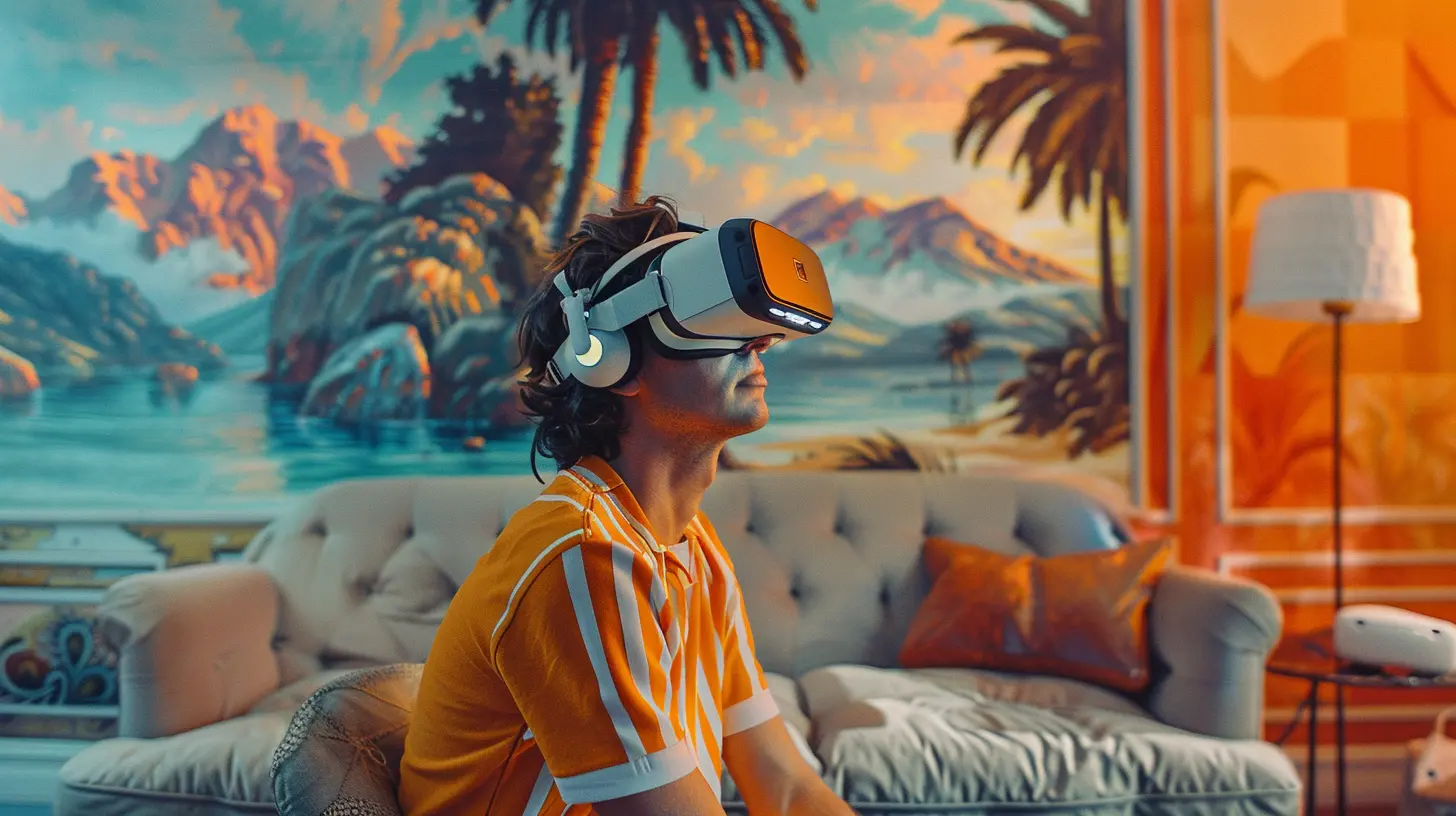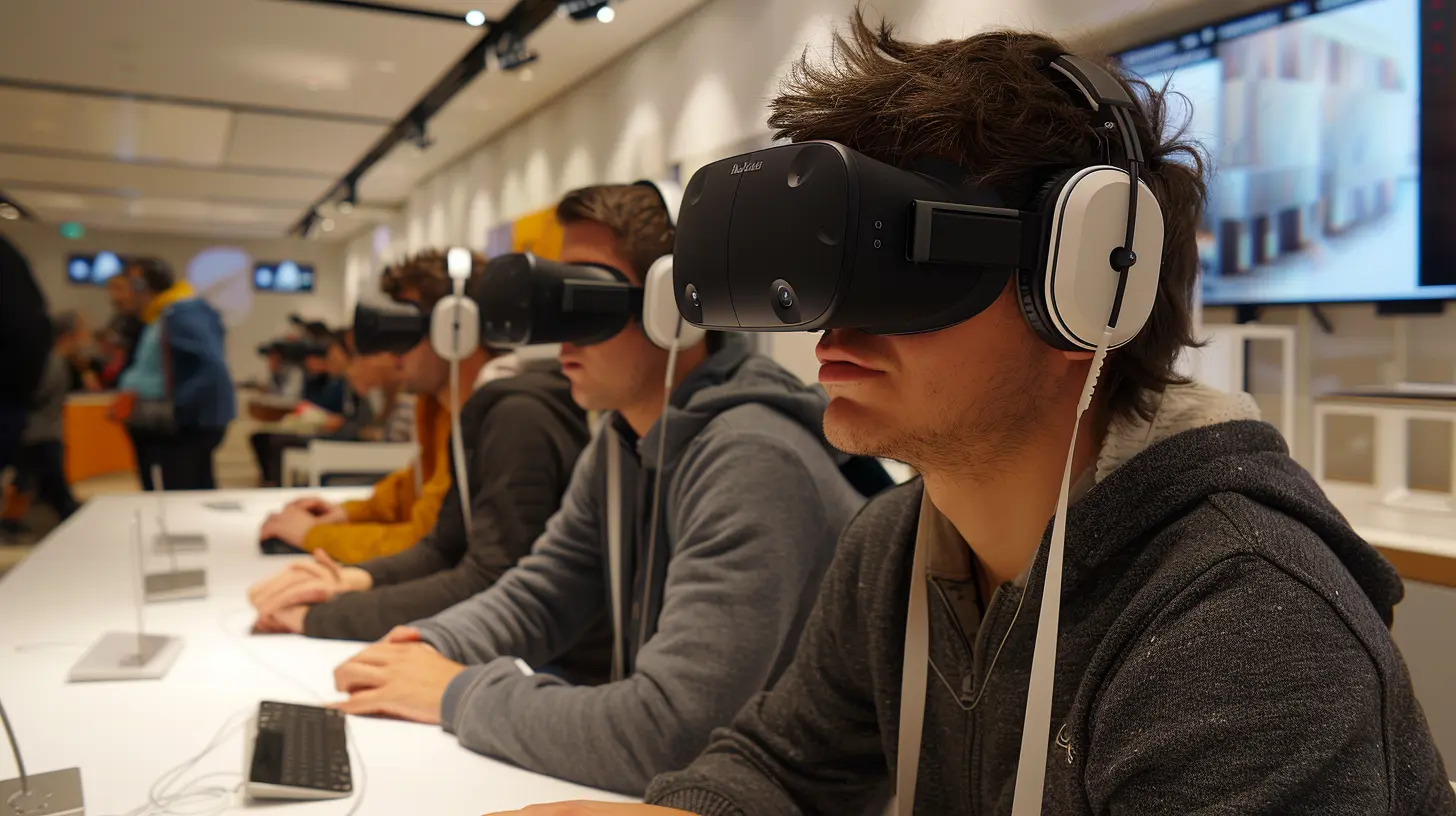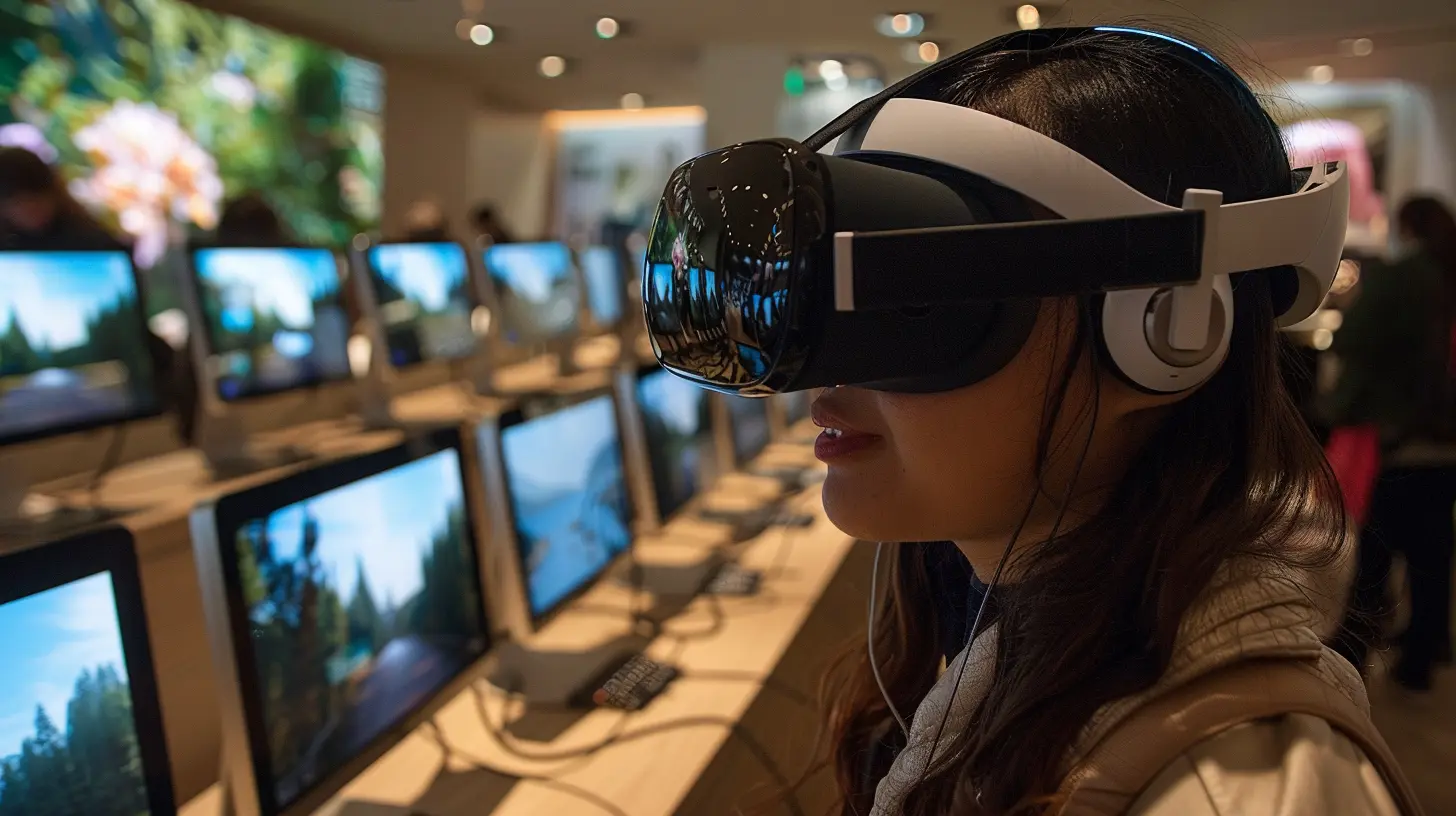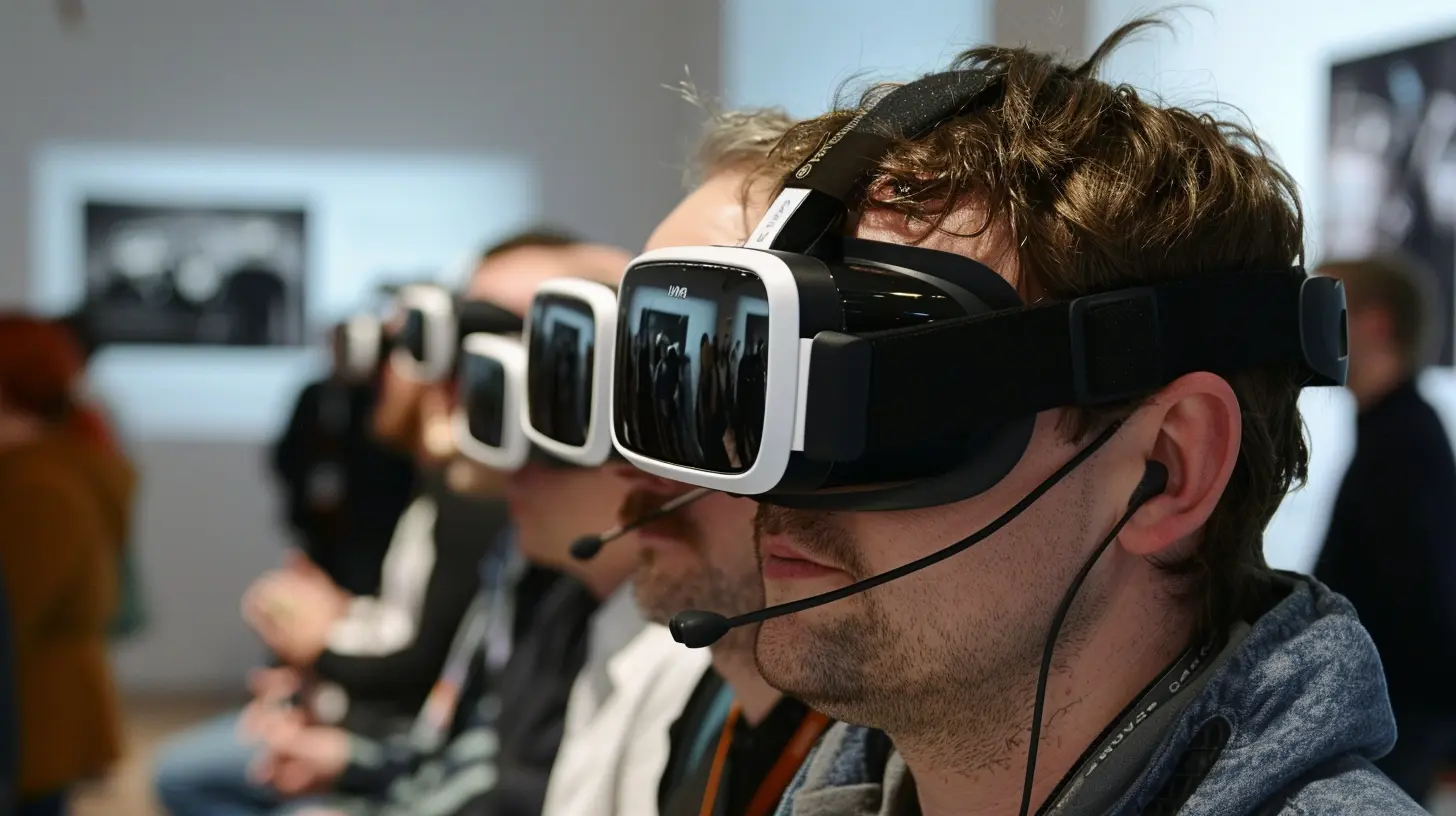Virtual Reality in Advertising: Creating Immersive Brand Experiences
12 January 2025
Imagine stepping into a world where you can touch, feel, and interact with a brand without ever leaving your living room. Sounds like science fiction, right? Well, it's not. This is the magic of Virtual Reality in advertising, and it's shaking up the marketing world in ways we never thought possible. With VR, brands are no longer limited to traditional ads—they can now offer full-blown, immersive experiences that transport consumers into their universe.
But how does it work? And more importantly, how can brands use it effectively to create unforgettable experiences? Let’s dive deep into the world of VR in advertising and explore why you might want to start thinking about it for your own brand.

What is Virtual Reality (VR)?
Before we jump into its applications for advertising, let's first define what Virtual Reality is. VR refers to a computer-generated simulation in which a user can interact with an artificial three-dimensional environment using special electronic equipment, like a VR headset. Unlike augmented reality (AR), which overlays digital elements in the real world, VR completely immerses the user in a digital world.Think of it as putting on a pair of goggles that transport you to another reality. Instead of simply watching a movie or scrolling through an ad on your phone, you're in the ad! You're part of the story, the experience, the brand.

Why VR is Changing the Game for Advertising
1. Immersion is King
Traditional advertising—whether it's a banner ad, a TV commercial, or even an influencer post—relies on grabbing the consumer's attention for just a few seconds. You're competing with a million other distractions: other ads, social media feeds, notifications, or the simple fact that people just don't care.Enter VR. With virtual reality, you're not just asking for attention; you're commanding it. The consumer is fully immersed in your brand's story, and there are no distractions. They’re wearing a headset, their senses are engaged, and they’re interacting with your brand in a way that feels like they’re part of the experience. It's the difference between reading about a roller coaster and actually riding one.
2. Emotional Connections
Want to make a lasting impression? Emotion is the key. We remember things that make us feel something—whether it's joy, excitement, or even fear. And VR excels in evoking emotions. When you place a consumer in an immersive environment, you're giving them the opportunity to feel the essence of your brand.For example, imagine a luxury car brand offering a VR test drive. Instead of just reading about the smooth ride, the user can sit in the virtual driver's seat, feel the road, and experience the luxury firsthand. This emotional connection fosters brand loyalty and makes the experience unforgettable.
3. Interactivity and Engagement
In the age of digital marketing, engagement is the holy grail. How many times has a brand engaged you with an ad that you just scrolled past? (Probably more times than you can count.) But VR isn't something you can just scroll past. It demands interaction.Virtual reality allows consumers to interact with your product in real-time. Whether it's trying on virtual clothes, walking through a virtual store, or even customizing a product before buying, the possibilities are endless. And because the experience is interactive, consumers are more likely to remember it, engage with it, and act on it.

How Brands are Using VR in Advertising
So, how are companies already leveraging VR for advertising? Here are some real-world examples that show just how versatile VR can be.1. Retail Experiences
Brands like IKEA are using VR to let customers design their own rooms. Imagine you're remodeling your kitchen. Instead of just browsing through a catalog, you can actually walk through a virtual kitchen, pick out cabinets, countertops, and appliances, and see how it all looks before making a purchase.This not only makes the shopping experience more fun but also reduces buyer’s remorse. Customers can "try before they buy" in a way that was never possible before.
2. Virtual Test Drives
Automotive companies have jumped on the VR bandwagon, and for good reason. Brands like Audi and Volvo are offering virtual test drives where users can sit behind the wheel and experience the car as if they were driving it in real life. And it doesn’t stop there—users can even explore the car’s features and customization options in a fully immersive environment.This is especially useful in today's world, where physical test drives might not always be feasible. Plus, it's a great way for brands to showcase their vehicles in a unique, memorable way.
3. Travel and Tourism
The travel industry is also using VR to give potential customers a taste of their next vacation. Companies like Marriott have created VR experiences where users can “visit” exotic locations without ever leaving their homes. Imagine standing on a beach in Bali or wandering through the streets of Paris—all from the comfort of your couch.This is a powerful tool for inspiring wanderlust and convincing people to book that next trip. After all, seeing is believing, right?
4. Real Estate
Real estate agents and developers are leveraging VR to offer virtual home tours. Instead of scheduling multiple in-person viewings, potential buyers can take a virtual tour of a property, explore the layout, and even visualize their furniture in the space.This not only saves time but also offers buyers a more personalized experience. Plus, it opens up the market to international buyers who might not be able to visit properties in person.
5. Event Marketing
Brands are using VR to create buzz around events. For instance, sporting events, concerts, or product launches can be experienced virtually by users who couldn’t attend in person. Coca-Cola, for example, created a VR sleigh ride experience that put users in Santa’s shoes, flying over snowy landscapes and spreading holiday cheer.This marries excitement with brand engagement, offering a fun, memorable way to interact with the brand.

The Challenges of VR in Advertising
As exciting as VR is, it’s not without its challenges. Let’s take a look at some hurdles brands need to overcome to successfully implement VR into their ad strategies.1. Cost
Let’s face it—VR technology isn’t cheap. Developing high-quality VR content and experiences requires significant investment in both software and hardware. Not to mention, the consumer also needs access to VR headsets, which can be a barrier to widespread adoption.However, as technology advances and becomes more affordable, this hurdle is slowly diminishing. VR headsets are becoming more accessible, and the cost of developing VR content is decreasing as the technology becomes more mainstream.
2. Accessibility
While VR is becoming more popular, it still isn’t as ubiquitous as smartphones or laptops. Not everyone has a VR headset sitting around at home. For VR ads to become more effective, there needs to be a higher adoption rate of the technology.That said, brands can overcome this by offering VR experiences in physical locations, like pop-up stores, malls, or special events, where customers can try it out without needing their own headset.
3. Content Quality
The success of VR advertising hinges on the quality of the experience. Poorly executed VR ads can do more harm than good. If the graphics are subpar or the experience feels clunky, consumers may walk away with a negative impression of the brand.To avoid this, it's crucial for brands to invest in high-quality, well-designed VR experiences that truly captivate their audience.
The Future of VR in Advertising
So, where are we headed with VR in advertising? The future looks incredibly bright. As VR technology continues to evolve, we can expect even more immersive and interactive experiences.1. Wider Adoption
As VR headsets become more affordable and accessible, we’ll likely see a surge in VR-based advertising campaigns. Just like smartphones have become a staple in everyday life, VR could soon follow suit. Brands that adopt VR early on will have a competitive edge in creating memorable, interactive experiences that engage consumers on a deeper level.2. Integration with AR and AI
The lines between Virtual Reality, Augmented Reality, and Artificial Intelligence are becoming increasingly blurred. Imagine a future where AI-driven virtual assistants guide you through a VR brand experience, offering personalized product recommendations based on your preferences.This integration will push the boundaries of what’s possible in advertising, offering consumers hyper-personalized, seamless experiences that feel more like a conversation than an ad.
3. Social VR
As social media platforms start to embrace VR, we could see the rise of “social VR” experiences. Picture hanging out with your friends in a virtual world, attending virtual concerts, or even shopping together in virtual stores. Brands that tap into this trend could create social, shared brand experiences that foster community and connection.
Conclusion
Virtual Reality in advertising is more than just a trend—it’s a revolution. The ability to immerse consumers in a brand’s universe, evoke emotion, and engage them on a deeper level is something traditional advertising can’t match. While there are challenges to overcome, the potential for creating unforgettable, interactive experiences is enormous.The question is: Are you ready to take your brand to the next level with VR?
all images in this post were generated using AI tools
Category:
Virtual RealityAuthor:

Michael Robinson
Discussion
rate this article
21 comments
Weston McNeal
Virtual reality is revolutionizing advertising, and brands that aren’t leveraging this technology are missing out on a seismic shift in consumer engagement. Immersive experiences create deeper emotional connections and unforgettable impressions. If your brand isn’t ready to dive into VR, you risk being left in the dust. Embrace the future now!
February 14, 2025 at 12:52 PM

Michael Robinson
Absolutely agree! Embracing VR is essential for brands to create impactful connections and stay relevant in today's competitive landscape.
Lila McKibben
Great insights! Virtual reality truly transforms advertising by making brand experiences more engaging. Can't wait to see how brands continue to innovate in this space!
February 4, 2025 at 4:42 AM

Michael Robinson
Thank you! I’m excited to see how brands leverage virtual reality to create even more compelling experiences for consumers.
Astrid Robinson
VR ads: Where brands meet dreamland adventures!
January 29, 2025 at 1:23 PM

Michael Robinson
Thank you! VR truly transforms advertising by immersing consumers in captivating brand narratives. It’s an exciting frontier for creative engagement!
Jocelyn Wilkins
VR transforms ads, but risks overshadowing authentic engagement.
January 26, 2025 at 4:03 AM

Michael Robinson
Thank you for your insightful comment! While VR offers exciting opportunities for immersive advertising, it’s crucial to balance technology with genuine engagement to maintain authenticity in brand connections.
Eloise Dorsey
Exciting potential for engaging brand experiences!
January 21, 2025 at 9:34 PM

Michael Robinson
Thank you! We're thrilled about the possibilities VR brings to create memorable brand interactions!
Thalyn Sharp
Virtual reality in advertising? Talk about stepping into a brand’s shoes—literally! Can't wait to don those VR goggles and shop like it’s 3023!
January 21, 2025 at 3:35 AM

Michael Robinson
Absolutely! VR is revolutionizing how consumers interact with brands, making shopping more immersive and engaging than ever before. Exciting times ahead!
Isabelle King
“Virtual Reality in advertising? Finally, a way to escape that awkward conversation about how my favorite brand’s latest car can’t fit in my apartment! Let’s immerse ourselves in better choices!”
January 20, 2025 at 9:45 PM

Michael Robinson
Absolutely! VR allows consumers to explore brands creatively, transforming awkward moments into engaging experiences. It's all about enhancing choices!
Idris Wilkerson
This article insightfully explores the transformative potential of virtual reality in advertising, highlighting how immersive experiences can forge deeper connections between consumers and brands. However, it will be crucial to address accessibility and ethical considerations to ensure inclusive and responsible implementation within the industry.
January 19, 2025 at 7:23 PM

Michael Robinson
Thank you for your thoughtful comment! I completely agree that addressing accessibility and ethical considerations is essential for the responsible use of virtual reality in advertising.
Ashira McAnally
This article highlights the transformative potential of virtual reality in advertising, showcasing how immersive experiences can enhance brand engagement. It's fascinating to see how technology is reshaping consumer interactions, and I look forward to seeing more innovative applications in the future.
January 19, 2025 at 1:20 PM

Michael Robinson
Thank you for your insightful comment! I'm glad you found the potential of virtual reality in advertising intriguing. Exciting developments lie ahead!
Trevor Moses
Virtual reality in advertising? More like virtual reality in 'look at me'! Sure, it’s immersive, but let’s not forget: a gimmick is still a gimmick, no matter how flashy the headset!
January 19, 2025 at 3:48 AM

Michael Robinson
While VR may seem gimmicky, it offers unique opportunities for brand engagement and storytelling that traditional methods can't match. It's about creating memorable experiences, not just flashy displays.
Desiree Bryant
This article brilliantly explores how virtual reality transforms advertising by creating immersive brand experiences. It's exciting to see how VR can engage consumers and enhance brand loyalty. Great insights!
January 18, 2025 at 7:54 PM

Michael Robinson
Thank you for your insightful comment! I'm glad you found the exploration of VR's impact on advertising engaging and valuable.
April Soto
What an exciting exploration of virtual reality in advertising! The potential for immersive brand experiences is truly groundbreaking. I can't wait to see how this tech transforms the marketing landscape!
January 18, 2025 at 11:49 AM

Michael Robinson
Thank you! I'm glad you find the possibilities of VR in advertising exciting—it's definitely a game-changer for brands and consumers alike!
Lena Kirk
This article offers valuable insights into the transformative potential of virtual reality in advertising. The exploration of immersive brand experiences highlights how VR can enhance consumer engagement and elevate marketing strategies, making it a must-read for professionals looking to innovate in the advertising space.
January 18, 2025 at 3:56 AM

Michael Robinson
Thank you for the thoughtful feedback! I'm glad you found the insights on VR's potential in advertising valuable.
Daniel Diaz
Great article! It's exciting to see how virtual reality is revolutionizing advertising by creating immersive brand experiences. This technology not only engages consumers on a deeper level but also opens new avenues for creativity and innovation. Looking forward to seeing how brands leverage VR to connect with audiences in unique ways!
January 17, 2025 at 8:38 PM

Michael Robinson
Thank you! I'm glad you enjoyed the article. It's an exciting time for VR in advertising, and I can't wait to see the innovative ways brands will engage with their audiences!
Jinx Vasquez
This article insightfully highlights the transformative potential of virtual reality in advertising. By creating immersive brand experiences, companies can forge deeper connections with consumers. I'm excited to see how this technology continues to evolve and reshape marketing strategies. Great read!
January 16, 2025 at 8:46 PM

Michael Robinson
Thank you for your insightful comment! I'm glad you found the article engaging and agree on the exciting potential of VR in advertising.
Faelan Johnson
Virtual Reality in advertising? Talk about a 'real' game changer! Just imagine trying on those new shoes without leaving your couch—finally, a way to shop that doesn’t require pants! Here’s to a future where ads are more immersive than my latest Netflix binge!
January 16, 2025 at 1:42 PM

Michael Robinson
Absolutely! VR in advertising offers a unique, immersive shopping experience that transforms how consumers engage with brands. It's a game changer indeed!
Harmony Bowman
“Who needs billboards when you can have a virtual rollercoaster ride through your favorite brand? Sign me up!”
January 16, 2025 at 5:36 AM

Michael Robinson
Absolutely! Virtual reality offers a unique, engaging way to connect with brands, making advertising more memorable and interactive. It's the future of brand experiences!
Nora Watson
Great article! I love how virtual reality is transforming advertising by creating immersive experiences that truly engage consumers. It's exciting to see brands harnessing this technology to forge deeper connections. Can't wait to see what innovative campaigns emerge next! Keep up the fantastic work!
January 15, 2025 at 9:59 PM

Michael Robinson
Thank you for your kind words! I'm thrilled you enjoyed the article and share the excitement about the future of virtual reality in advertising. Stay tuned for more innovative campaigns!
Noemi Ortiz
This article beautifully illustrates the potential of virtual reality in advertising. It’s exciting to see how immersive experiences can connect brands with audiences on a deeper level, fostering genuine engagement and understanding.
January 14, 2025 at 4:11 AM

Michael Robinson
Thank you for your insightful comment! I'm glad you found the potential of virtual reality in advertising exciting. It truly has the power to transform brand engagement!
Ursula McIntyre
Virtual reality in advertising? More like virtual reality in ‘Let’s waste our budget!’ If brands think gimmicks sell, they’re in for a rude awakening when users log off.
January 12, 2025 at 7:40 PM

Michael Robinson
While I understand your concerns, VR in advertising has the potential to create meaningful and memorable experiences that resonate with consumers when done thoughtfully, rather than just as a gimmick.
Rocket Taylor
Finally, a way to experience ads without a pesky commercial break—just don’t trip over your couch!
January 12, 2025 at 3:37 AM

Michael Robinson
Thank you! Virtual reality truly transforms how we engage with brands, making ads part of an immersive experience. Just watch your step!
MORE POSTS

How Wearable Tech is Changing the Way We Manage Chronic Conditions

The Key Role of Encryption in Safeguarding Your Data

The Importance of Strategic Partnerships for Tech Startups

Cybersecurity for Remote Workers: Essential Tips for Staying Secure

The Intersection of Wearable Devices and Personal Security

Bio-Based Plastics: The Green Tech Solution to Traditional Plastics

Elevating Your Workflow: The Best New Tools for Digital Creators

Exploring the Latest Trends in Personal Robotics

How VR is Changing the Face of Multiplayer Gaming

How Big Data is Influencing the Future of Remote Work

The Role of AI in Advancing Green Technology

Funding Strategies Every Tech Startup Founder Should Know

The Benefits of Solar-Powered Carports and Garages